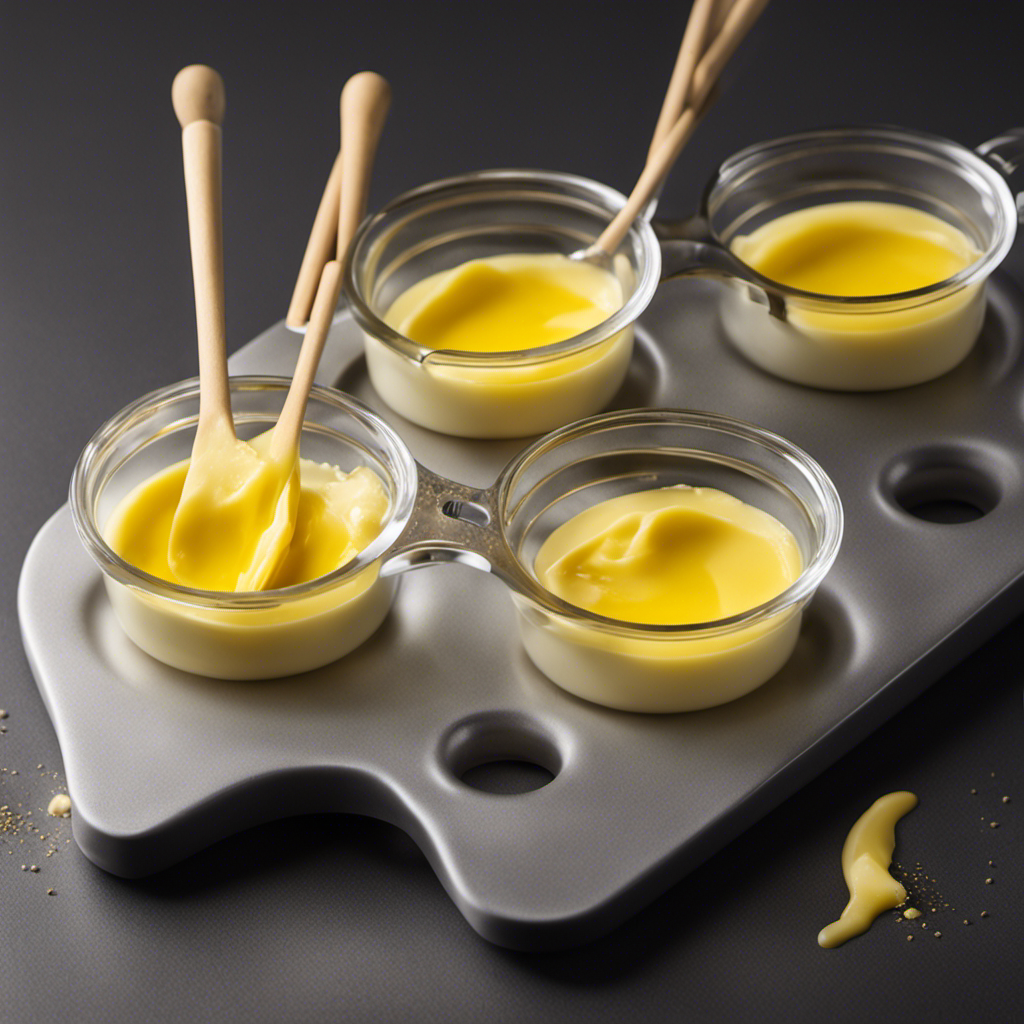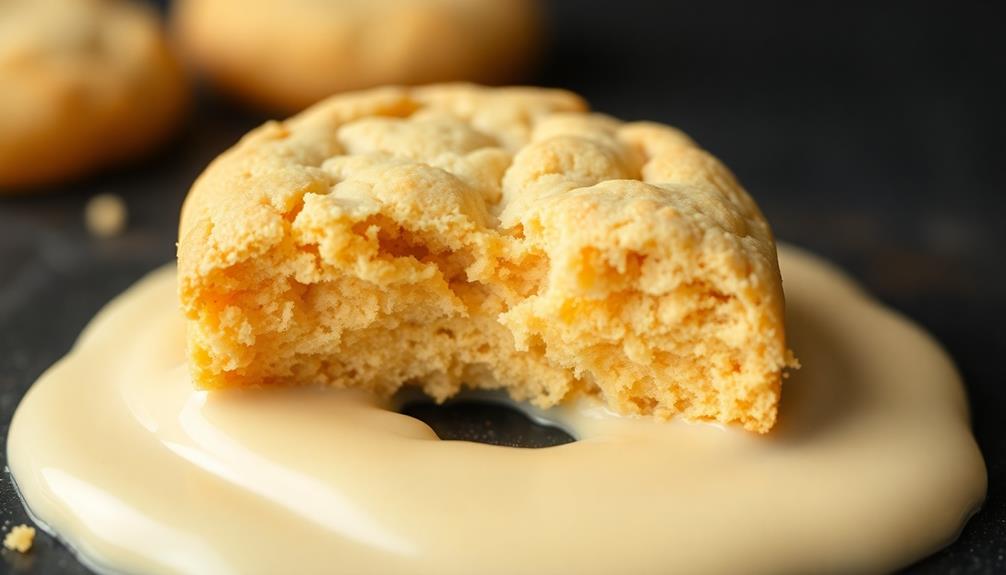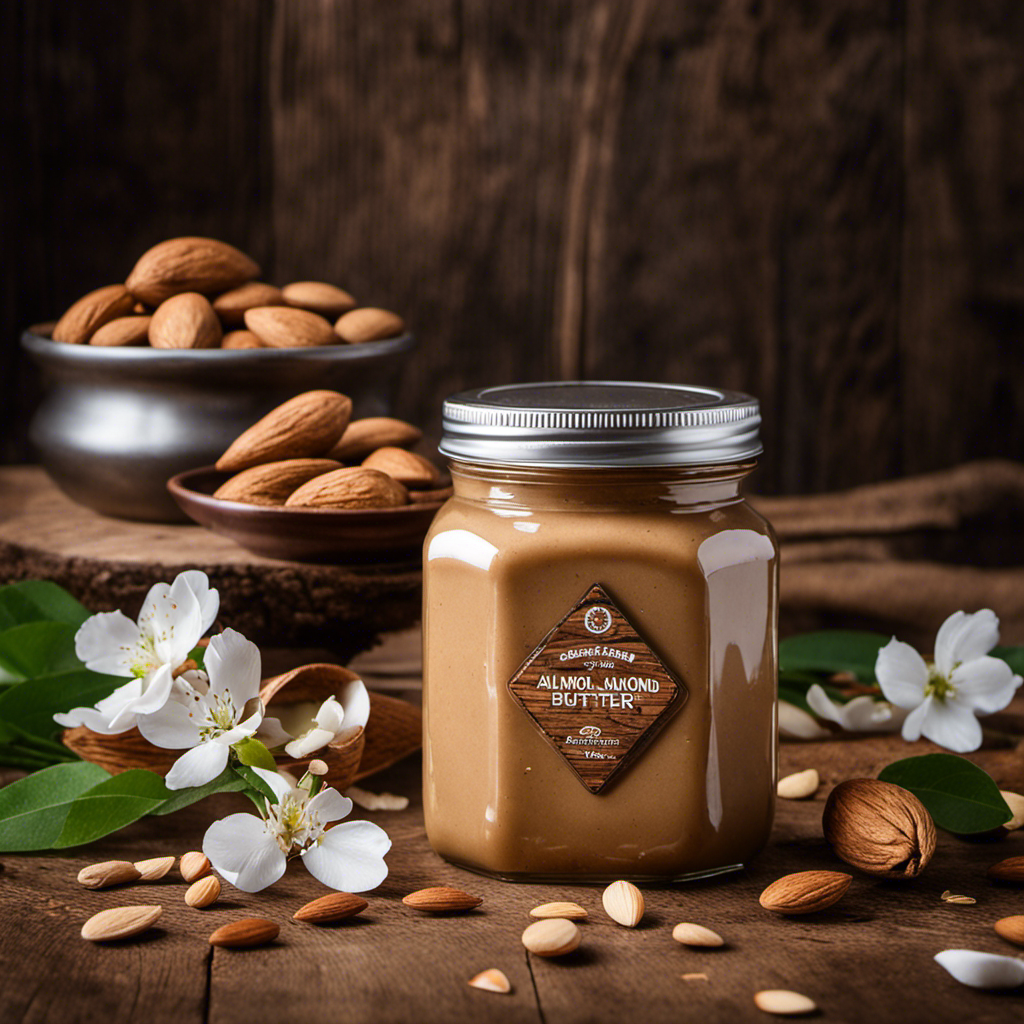Were you aware that butter, a crucial component in both cooking and baking, possesses a precise melting point?
In fact, the melting point of butter can vary depending on various factors. In this article, I will explore the different types of butter and their melting points, as well as the importance of measuring butter melting temperature accurately.
Additionally, I will provide tips for properly melting butter to enhance your culinary creations.
So, let’s dive into the fascinating world of butter melting temperatures!
Key Takeaways
- Butter melting temperature is affected by factors such as fat content, breed of cows, diet, and brand.
- Room temperature affects the spreadability of softened butter, which is important for baking and cooking.
- Microwaving or grating can soften butter for easier spreading, but should be done in short bursts of low heat to prevent complete melting.
- Different types of butter have different melting points, such as unsalted butter (32-35°C), salted butter (30-34°C), clarified butter (82-88°C), and vegan butter (40-45°C).
The Melting Point of Butter
Butter melts at around 32 degrees Celsius. The melting point of butter can vary depending on several factors influencing its composition. One of the main factors is the amount of fat present in the butter. Higher fat content leads to a lower melting point, as the fat molecules are more easily separated and can move more freely.
Other factors include the presence of water and impurities in the butter. When butter melts, it transforms from a solid to a liquid state, making it easier to spread or mix into various recipes. Melted butter is commonly used in cooking and baking, adding richness and flavor to dishes such as sautés, sauces, and pastries.
It can also be used as a topping for popcorn or vegetables, providing a delicious and indulgent experience.
Factors Affecting Butter Melting Temperature
When discussing factors that affect the melting temperature of butter, it’s important to consider the impact of fat content. Different types of butter with varying fat percentages will have different melting points due to the presence and composition of fats.
Additionally, the temperature of the room in which the butter is stored or used can also have an effect on its melting point, as higher temperatures will accelerate the melting process.
Lastly, the method of heating used, such as direct heat or microwave, can influence how quickly and evenly the butter melts.
Fat Content Impact
The fat content of butter affects its melting point. Butter is composed of water, milk solids, and fat. The more fat present in butter, the higher its melting point will be. This is due to the fact that fat molecules have a higher boiling point compared to water and milk solids. As a result, butter with a higher fat content will require a higher temperature to melt completely.
Butter with a fat content of 80% or higher has a higher melting point than butter with a lower fat content. The melting point of butter can vary depending on the breed of cows and their diet, affecting the fat content. Additionally, the fat content comparison of different brands of butter can lead to variations in their melting points.
Understanding the impact of fat content on butter’s melting point is crucial in various culinary applications where precise temperature control is necessary.
Room Temperature Effect
Room temperature significantly affects the spreadability of softened butter. When stored at room temperature, butter becomes soft and easier to spread. This is because at room temperature, typically around 70°F (21°C), the fat in butter starts to melt, making it more pliable.
Room temperature storage is especially important for butter if you plan to use it for baking or cooking, as it needs to be easily incorporated into recipes. To achieve the ideal room temperature for butter, you can leave it out on the counter for about 30 minutes to an hour before use.
Alternatively, you can use different butter softening techniques, such as grating cold butter or microwaving it in short intervals, to quickly bring it to room temperature. These methods ensure that your butter is soft and ready to use in your culinary endeavors.
Heating Methods Influence
Using different heating methods, such as microwaving or grating, can quickly soften butter to make it easier to spread. These heating techniques alter the butter’s melting consistency, allowing it to become more pliable and spreadable.
When microwaving butter, it’s important to use short bursts of low heat to prevent it from melting completely. This gradual approach ensures that the butter retains its structure while softening.
Grating cold butter and then letting it sit at room temperature for a few minutes can also achieve the desired result. The grated butter will warm up faster due to its increased surface area, resulting in a softer texture.
These heating methods provide convenient options for achieving the perfect spreading consistency for butter.
Now, let’s explore the different types of butter and their melting points.
Different Types of Butter and Their Melting Points
You might be wondering about the melting points of various types of butter. Well, let me shed some light on this topic. Different types of butter have different melting points, which can affect their performance in various culinary applications. To help you understand this better, here is a table showcasing the melting points of common types of butter:
| Butter Type | Melting Point (°C) |
|---|---|
| Unsalted Butter | 32-35°C |
| Salted Butter | 30-34°C |
| Clarified Butter | 82-88°C |
| Vegan Butter | 40-45°C |
As you can see, unsalted and salted butter have relatively low melting points, making them ideal for spreading on bread or melting in recipes. Clarified butter, on the other hand, has a higher melting point, which makes it suitable for high-temperature cooking methods like sautéing and frying. Lastly, vegan butter, made from plant-based oils, has a slightly higher melting point compared to regular butter. Understanding the melting points of different types of butter can help you choose the right one for your culinary needs.
How to Measure Butter Melting Temperature
When it comes to measuring the melting point of a substance, there are several factors that can affect the accuracy of the measurement. These factors include impurities in the sample, heating rate, and atmospheric pressure.
It is crucial to account for these factors in order to obtain precise and reliable data. Accurate measurement of melting points is essential for identifying substances and determining their purity.
Factors Affecting Melting Point
One of the factors that affects the melting point of butter is its composition. Butter is primarily composed of milk fat, which consists of triglycerides. These triglycerides are made up of fatty acids such as palmitic acid, stearic acid, and oleic acid. The specific combination and proportion of these fatty acids in the butter can influence its melting point.
Climate: The ambient temperature and humidity of the environment can impact the melting point of butter. In warmer climates, the melting point of butter may be lower due to the higher ambient temperature.
Storage conditions: How butter is stored can also affect its melting point. If butter is stored at higher temperatures, such as in a warm kitchen, it may have a lower melting point. On the other hand, if butter is stored in a cool environment, it may have a higher melting point.
Processing methods: The way butter is processed can also influence its melting point. Factors such as churning techniques and the removal of moisture during the manufacturing process can affect the butter’s composition and consequently, its melting point.
Understanding these factors is crucial for bakers, chefs, and food manufacturers, as it helps them determine how butter will behave in different environments and storage conditions.
Importance of Accurate Measurement
In the previous subtopic, we discussed the factors that can affect the melting point of butter.
Now, let’s delve into the importance of precise measurement in cooking. Accurate measurement is crucial in achieving consistent and desirable results in the kitchen.
When it comes to temperature, precise measurement is particularly important. Different cooking processes require specific temperatures to achieve the desired outcome. Whether it’s melting butter for baking or searing a steak, knowing and maintaining the correct temperature is crucial.
Temperature affects the molecular structure of food, influencing its texture, flavor, and overall quality. Even a slight variation in temperature can have a significant impact on the cooking process.
To ensure successful cooking results, it’s essential to use reliable thermometers and follow precise temperature guidelines.
Butter Melting Temperature in Baking and Cooking
The temperature at which butter melts varies depending on the recipe and cooking method. It is a crucial factor to consider when baking or cooking, as it can significantly affect the texture and overall outcome of the dish.
In scientific research, the melting point of butter has been extensively studied to understand its physical properties and behavior during different cooking processes. Interestingly, the melting point of butter can also be influenced by the climate in which it is stored or used.
Here are some key points to consider:
- Butter has a melting point range of approximately 82-97°F (28-36°C).
- The melting point can vary slightly depending on factors such as the water content, fat content, and presence of impurities in the butter.
- In colder climates, butter may have a higher melting point, requiring longer melting times or pre-warming to achieve desired consistency.
Understanding the butter melting point is essential for achieving optimal results in baking and cooking, ensuring that the butter is melted and incorporated correctly into the recipe.
Tips for Properly Melting Butter
To properly melt butter, it’s important to heat it slowly over low heat to prevent burning. This ensures that the butter melts evenly and maintains its rich flavor. However, if you’re short on time and need to melt butter quickly, there are a few tips you can follow. First, cut the butter into small pieces to increase the surface area and promote faster melting. Second, use a microwave-safe container and cover it with a microwave-safe lid or microwave-safe plastic wrap to trap the heat and speed up the melting process. Finally, microwave the butter in short bursts of 10-15 seconds, checking and stirring in between to prevent overheating. By following these tips, you can melt butter quickly without compromising its quality.
| Tips for melting butter quickly | Best containers for melting butter |
|---|---|
| Cut butter into small pieces | Microwave-safe container |
| Use a microwave-safe container | Microwave-safe lid or plastic wrap |
| Microwave in short bursts |
Frequently Asked Questions
Can Butter Be Melted in the Microwave?
Yes, butter can be safely melted in the microwave. It’s important to use a microwave-safe dish and heat it in short intervals, stirring in between. Alternatively, you can melt butter on the stove or in the oven.
Does the Shape of the Butter Affect Its Melting Point?
The shape of butter does not affect its melting point. However, factors like altitude and salt content can impact the melting point. The precise temperature at which butter melts varies, but it is typically between 82°F and 97°F.
What Is the Melting Point of Clarified Butter?
The melting point of clarified butter, also known as ghee, can be affected by the purity of the butter. Higher purity levels can lead to a higher melting point.
Can Butter Burn if It Is Heated Above Its Melting Point?
Butter can burn if heated above its melting point, just like a candle’s flame consuming the wick. However, it can also turn into a liquid and solidify again when cooled, like a magical shape-shifting substance.
Does the Freshness of Butter Affect Its Melting Point?
The freshness of butter can affect its melting point. Factors such as the presence of salt and exposure to air can influence the melting point of butter.
Conclusion
In conclusion, understanding the melting point of butter is crucial for achieving culinary perfection.
Just like the delicate balance of flavors in a harmonious symphony, the temperature at which butter melts determines the success of our culinary endeavors.
By considering the factors that influence melting temperature, choosing the right type of butter, and employing accurate measurement techniques, we can ensure that our butter melts smoothly and evenly.
So, let us embark on this melting journey, armed with knowledge and precision, to create gastronomic masterpieces that will delight the senses.










